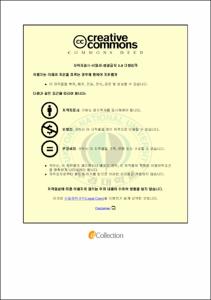A Study on Ship Maneuvering in Harbor Area by Using Tugboats
- Alternative Title
- 복잡한 항만 환경에서의 선박운동제어에 관한 연구
- Abstract
- Maneuvering in harbor is known as the most sophisticated and difficult procedure. Much knowledge and experiment are demanded to accomplish berthing. So, automatic ship berthing is highly needed to reduce the manpower. The thesis proposes a method for ship maneuvering in harbor area by using tugboats.
In the first content of this thesis, automatic ship berthing studies are reviewed and summarized. The main difficulties for ship berthing are:
- The significant reduction in controllability of actuators due to the low speed operations
- The influence on ship handling due to change in hydrodynamic effects
- The relatively large effects of environmental disturbance
- The stress and fatigue of ship master with processing a large amount of information
These difficulties are the motivation to propose an approach for ship berthing by using autonomous tugboats.
Modeling is essential since most of controller and observer design are based on the model of marine vessel. In this thesis, the 3DOF low frequency model used for ship maneuvering in berthing by using assistance of 4 tugboats is proposed.
An importance in marine control is state estimator design. The state estimation is used to estimate the ship velocities, the bias term of slowly varying environmental disturbance and filter out the effect of 1st–order wave disturbance component from the measured position and heading. In this thesis, both linear observer by using Kalman filter and nonlinear passive observer are presented and assessed.
Hydrodynamic coefficients can change when the ship moves from the open sea to confined water and should be considered as uncertainty parameters. To capture this, a nonlinear adaptive controller is proposed for design an automatic berthing system by using 4 tugboats. Thrust allocation for this over-actuated system is formulated to determine the thrust of each tugboat. The control allocation is considered as optimization problem and solved by using redistributed pseudo inverse approach. In this study, the controller is developed on the assumption that all states of the vessel are measureable and the uncertainty of dynamic system only appears on the damping matrix.
To overcome drawbacks presented in adaptive control study, a sliding mode controller in combination with nonlinear passive observer is proposed to build up a fully automatic berthing system. Simulation results are used to evaluate the proposed approach.
To build up a model basin for getting experiment data, a measurement system which is used to measure the position and orientation of ship by using image processing technique is successfully completed. A model ship and four tugboats used in this study are designed and created. Real time control strategy using Compactrio and Labview programming is developed.
- Issued Date
- 2013
- Awarded Date
- 2013. 2
- Type
- Dissertation
- Publisher
- 부경대학교
- Affiliation
- 부경대학교 대학원
- Department
- 대학원 제어기계공학과
- Advisor
- Prof. Young Bok Kim
- Table Of Contents
- Contents
Acknowledgement
Contents i
Abstract iv
List of Figures vi
List of Abbreviations ix
Chapter 1 Introduction 1
1.1 Background and Motivation 1
1.1.1 Overview of Marine Control System 1
1.1.2 Overview of Automatic Ship Berthing System 4
1.2 Objective of Thesis 10
1.3 Organization of Thesis 10
Chapter 2 Modeling of Marine Vessels 13
2.1 Introduction 13
2.2 Notation and Kinematics 14
2.2.1 Reference Frames and Notations 14
2.2.2 Kinematics 16
2.3 Maneuvering Model 18
2.3.1 6 DOF Maneuvering Model 19
2.3.2 3 DOF Maneuvering Model 30
2.4 Seakeeping Model 31
2.5 Model for Control that Require Maneuvering in Seaway 32
Chapter 3 State Estimator Design 34
3.1 Introduction 34
3.2 System Model for Dynamic Positioning Observer Design 35
3.2.1 1st order Wave Disturbance Model 35
3.2.2 Slow Varying Disturbance Model 37
3.2.3 Measurement 37
3.3 Linear Observer by Using Kalman Filter 38
3.3.1 Kalman Filter Structure 38
3.3.2 Linear Observer by Using Kalman Filter Assessment 41
3.4 Nonlinear Passive Observer Design 47
3.4.1 Nonlinear Passive Observer Structure 48
3.4.2 Stability Analysis of Nonlinear Passive Observer 51
3.4.3 Nonlinear Passive Observer Assessment 56
Chapter 4 Adaptive Control Design for Autonomous Ship Berthing 59
4.1 Introduction 59
4.2 Mathematical Model of System 61
4.3 Adaptive Control Design 63
4.4 Formulation of Control Allocation 67
4.5 Simulation Results 69
4.6 Summary 76
Chapter 5 Nonlinear Passive Observer and Sliding Mode Controller Design for Ship Berthing 78
5.1 Introduction 78
5.2 Nonlinear Passive Observer and Sliding Mode Controller Design 78
5.2.1 Nonlinear Passive Observer Design Summary 78
5.2.2 Sliding Mode Controller Design 80
5.3 Simulation Results 83
5.3.1 Comparison between Sliding Mode Control and PID 84
5.3.2 Ship Berthing Simulation by Using Nonlinear Passive Observer and Sliding Mode Controller 88
5.4 Summary 90
Chapter 6 Conclusions and Future Works 92
6.1 Conclusions 92
6.2 Future Works 93
Reference 95
Publications 103
Appendix A 105
A.1 Introduction 105
A.2 Measuring System 106
A.3 General Configuration of MCL Ship 109
- Degree
- Doctor
- Files in This Item:
-
-
Download
 A Study on Ship Maneuvering in Harbor Area by Using Tugboats.pdf
기타 데이터 / 4.46 MB / Adobe PDF
A Study on Ship Maneuvering in Harbor Area by Using Tugboats.pdf
기타 데이터 / 4.46 MB / Adobe PDF
-
Items in Repository are protected by copyright, with all rights reserved, unless otherwise indicated.